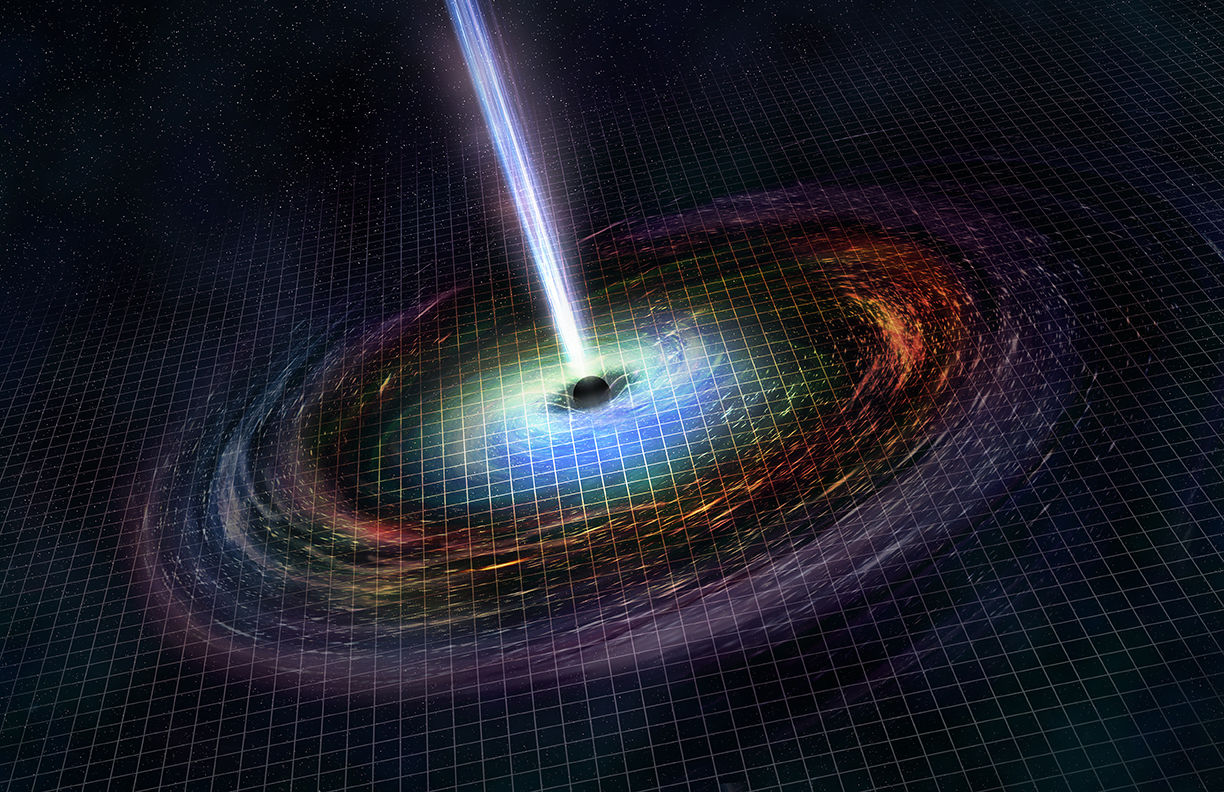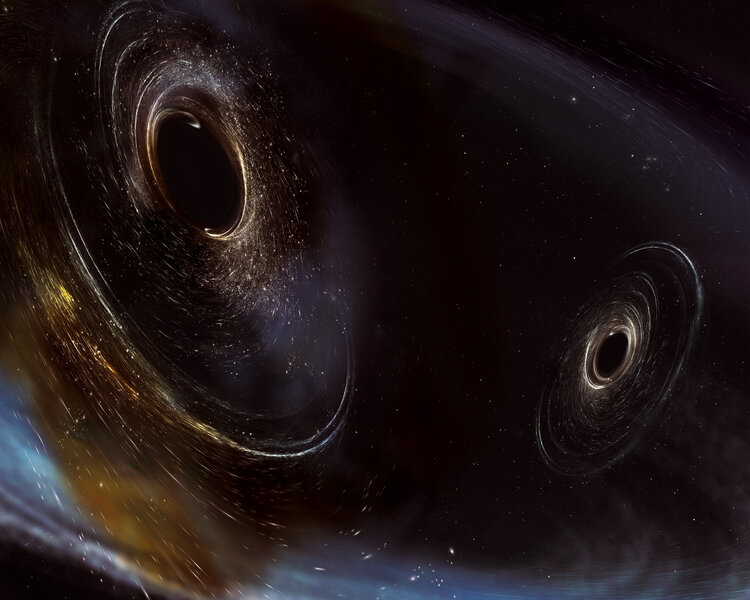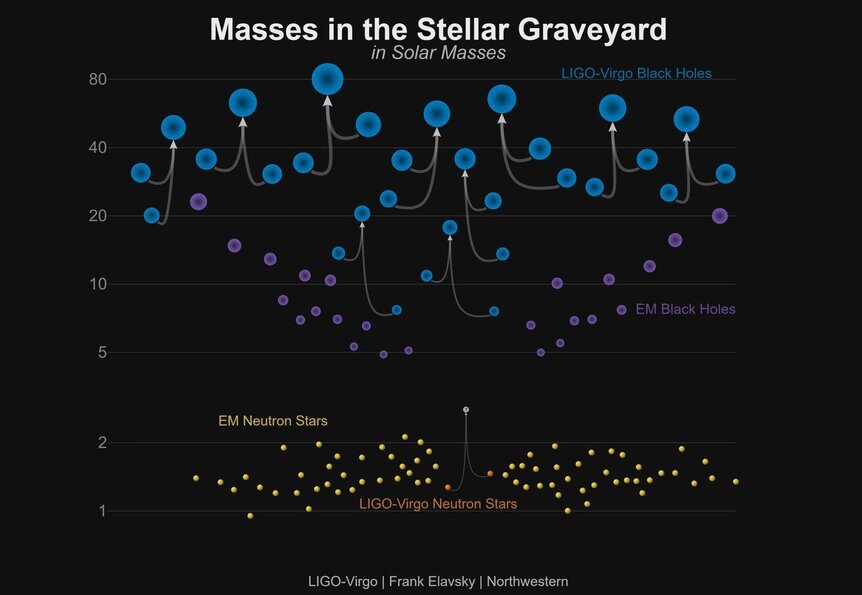Create a free profile to get unlimited access to exclusive videos, sweepstakes, and more!
*FOUR* new black hole mergers have been found blasting out gravitational waves!

If you’re a fan of ridiculously colossal over-the-top blasts of energy screaming away in the cosmos, you’re in luck: Astronomers just announced the discovery of four new gravitational wave detections, meaning four new sets of merging black holes found out in the Universe!
Whoa.
This brings to 11 the total known merger events detected this way. Mind you, the first ever seen was in September 2015, so this is a brand-new field of astronomy… though it’s been decades in the making.
For background: When the first discovery was announced in February 2016, I wrote a primer with all the info you need to understand gravitational waves. In a (perhaps overly simplified) nutshell, one of the predictions of Einstein’s General Relativity is that spacetime is in some sense a thing itself, like a fabric in which everything is embedded. Any time an object is accelerated it shakes that fabric, with the force of that shake depending on the object’s mass and how much it’s accelerated. The more massive and the more rapid the acceleration, the stronger the shaking.
In astronomy, you don’t get that combination any better than two black holes spiraling together and merging into one. They can be many times more massive than the Sun, and just before they merge they accelerate each other to very nearly the speed of light. Whipping around that rapidly they create a powerful series of ripples that expand outward: gravitational waves. They literally compress and expand space as they pass through it. They get weaker with distance, making them difficult to detect over hundreds of millions of light years, but astronomers have been trying since the 1960s to see them. The Laser Interferometer Gravitational-wave Observatory (or LIGO) was the first observatory to successfully detect them.
Even then it took a while. Over the years various upgrades to LIGO have made it more sensitive, and it was after one such upgrade that it was switched back on and almost immediately found its — and humanity’s — first solid detection of a pair of black holes merging. Since that time a second observatory called Virgo also came online, and with their combined powers more detections are being made.
These new discoveries come from observations already taken which has been reanalyzed with new computer algorithms. (Note: The paper with all this info hasn’t been peer-reviewed yet, but given the nature of the discovery I suspect not much will need to be changed… but to be clear it has not been published in a scientific journal yet.) As a test, the team of scientists was able to recover the seven previously known mergers (including the amazing event from early August 2017 when gravitational waves were detected from two merging neutron stars).
But they also found four signals that were missed before, bringing the total known binary black hole mergers to an even ten.
The four new events are called GW170729, GW170809, GW170818, and GW170823 (for Gravitational Wave and the date it was detected in yymmdd format). They are all cool, but GW170729 stands out.
For one thing, the masses of the two black holes in this event are by far the highest ever seen by LIGO. They were 50.6 and 34.3 times the Sun’s mass each (with some uncertainty), making them very big stellar-mass black holes. Also, from the strength of the signal the distance to them is inferred to be a whopping 9 billion light years — two-thirds of the way across the visible Universe! That’s very exciting, because it means we can actually detect such events at cosmological distances, so far from us that the Universe has changed measurably over the time it took the signal to reach us.
This next part is what makes the hair on the back of neck stand up. When two black holes merge, a fraction of their mass is converted into energy in the form of gravitational waves. That fraction is only a few percent, but we’re talking about huge masses here. Then when you calculate the energy radiated away by using E=mc2, the numbers are teeth-chilling.
In the case of GW170729, the final mass of the black hole after the merger was 80.3 times that of the Sun. The math isn’t straightforward, but this means that about 4.8 times the mass of the Sun was converted directly into energy in the merger event. When you do the calculation, that means the total energy radiated was about 9 x 1047 Joules.
Yegads. That number is terrifyingly huge. Over its entire 10 or so billion year lifetime, the Sun will emit something like 1 x 1044 Joules of energy. That black hole merger emitted nearly ten thousand times that much energy in a fraction of a second.
That sound you hear is me running around in circles and screaming incoherently.
Yeah. That’s a lot of energy. And it’s released fast. Black holes, man. Black holes.
The team was also able to find more events that might be real, but they can’t confirm with enough confidence to say they are. Call them marginal detections, and there are 14 in total. Perhaps future analysis will be able to confirm or reject some of those as well, too.
Also of note is that an event in 2015, provisionally dubbed LVT151012 (LVT for "LIGO Virgo Trigger"), wasn’t certain enough at the time to say it really was a black hole binary merger. The new method does show it was statistically very likely to be real, so they redub it GW151012, and to be fair don’t count it as a new detection, instead including it among the seven previously known mergers.
These new detections also put some limits on the rates of these events, too, given the number of mergers they detect over a certain time and out to a certain distance. This is measured in number of events that occur per year per volume of space, and in this case specifically it’s a BIG volume: a cube over three billion light years on a side.
Doing the math, they find that black hole mergers occur somewhere between 10 – 100 times per year in that volume. Neutron star binary mergers happen somewhere between 100 and 4000 times per year in that same volume (remember, only one of these has been seen so far, so there’s a decent uncertainty to that rate). We’ve never detected a black hole eating a neutron star, which puts an upper limit to these kinds of events at 600 or so per year in that same volume — that means that if there were more than that we’d have seen one by now.
I have to say, this is very exciting. When the first black hole merger was detected we knew it was a door opening on an entirely new field of astronomy. When the neutron star merger was seen — and, for the first time, detected by the light it gave off by other telescopes — we knew we were seeing that door thrown open even more.
These new results are astronomers walking up to that doorway and taking that first step through. What will we see when we get a really good look around?
Tip o’ the strain detector to my friend Katie Mack for tweeting about this, linking to a tweet by LIGO scientist Christopher Barry, who announced the new paper.





























